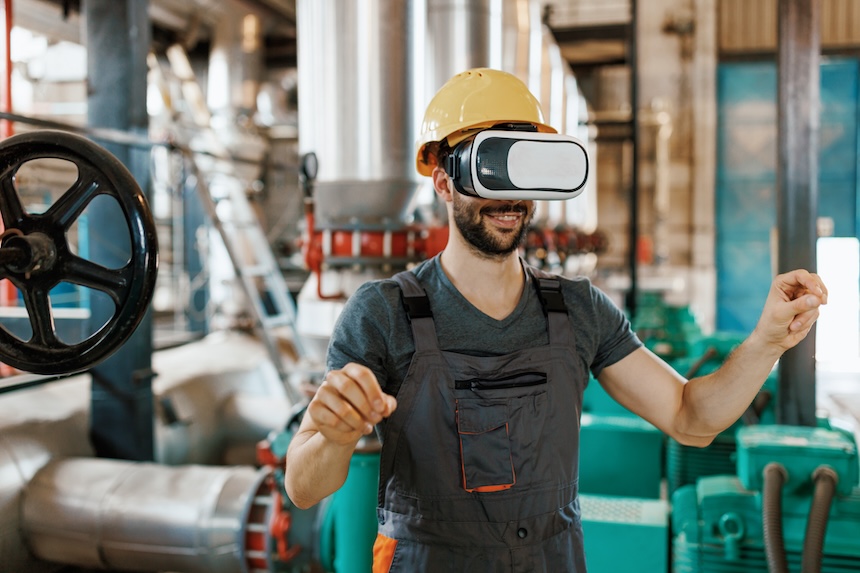
Introduction
In a world of constant change, businesses must stay agile and ahead. This case study illustrates how EI collaborated with one of the biggest energy and petrochemical organizations to bring a change in workforce development by introducing innovative learning solutions.
They had provided their teams with an engaging, game-based learning program that builds crucial competencies around navigating the intricacies of EV network development and market expansions. The focus was on adaptability and retention of learning in the fast-moving e-mobility sector.
Business Need and Objective
The organization approached us to partner in addressing a critical business imperative: skillfully navigating the complexities of rapidly advancing electric vehicle (EV) network development. With the fast-paced growth of the e-mobility sector, their workforce needed enhanced competencies through an interactive digital learning solution to assimilate new and intricate information effectively.
Our Solution and Strategy
- Futuristic and Gamified Solution for Complex Information: The dynamic nature of the e-mobility sector requires a robust mechanism for transferring complex information to the workforce. The learning program provided a structured, futuristic, and gamified solution, enabling employees to comprehend intricate aspects of EV network development.
- Diverse Development Options: Recognizing varied business conditions, the training program adopted diversified modalities within a digital learning solution to provide an engaging learning experience. By catering to varied learning preferences, the program successfully disseminated information.
To ensure effectiveness, the learning material needed to be relevant, concise, and highly engaging without requiring frequent updates, despite a very dynamic external environment. This gamified solution was particularly useful for network planners, real estate managers, and engineers in their EV ecosystem. Learners were able to see the upstream and downstream impacts of their roles, helping them better understand the business they support.
Program Overview
The learning program was meticulously designed to empower their workforce with essential knowledge and skills in the rapidly evolving e-mobility sector. This comprehensive program aimed to provide a deep understanding of e-mobility fundamentals, network strategy, site selection processes, and collaborative tools, fostering a workforce capable of navigating the complexities of the industry.
Goals Established and Achieved
- Knowledge Enrichment: The primary goal was to enrich the knowledge of teams involved in e-mobility, covering terminology, industry rules, and global network strategies. Through engaging modules and real-world simulations, the program successfully achieved this goal.
- Strategic Decision-Making: Another crucial goal was to equip teams with the ability to make strategic decisions in global market entry and expansion of EV charging points. The program, with its tiering frameworks, reporting structures, and emphasis on data-driven solutions, met this objective, preparing their workforce for informed decision-making.
- Efficient End-to-End (E2E) Process: The learning program set out to streamline the end-to-end process, from site selection to implementation, ensuring efficiency and effectiveness.
Program Design Overview
The learning program is meticulously designed to offer an immersive, engaging, and effective educational experience. It leverages a variety of modalities and innovative design elements to ensure comprehensive skill development in the intricate field of EV network development.
Key Design Elements
-
Gamification Principles
- Mission-Driven Learning: The program kicks off with an engaging introductory video that sets the stage for the learning journey. Learners are introduced to their mission: to become the leading organization in establishing the highest number of EV charging stations in a hypothetical city. This mission is achieved by earning credits through successful completion of various tasks and challenges.
- Interactive Challenges: Throughout the program, learners encounter interactive challenges that simulate real-world scenarios. These challenges are designed to test and enhance their understanding of EV network development, from site selection to implementation.
- Progress Tracking and Rewards: Learners can track their progress through a dynamic dashboard that displays earned credits, completed tasks, and upcoming challenges. Rewards and badges are awarded for milestones achieved, fostering a sense of accomplishment and motivation.
-
Diverse Learning Modalities
- Video Demonstrations: Short, focused video clips demonstrate key concepts and procedures, providing visual and practical insights into EV network development.
- Interactive Scenarios: Branching scenarios allow learners to make decisions and see the outcomes, helping them understand the complexities and nuances of their roles.
- Simulations: Realistic simulations offer hands-on experience in managing EV network projects, from planning to execution.
- Quizzes and Assessments: Regular quizzes and assessments ensure knowledge retention and provide immediate feedback to learners.
-
Engaging Content Delivery
- Microlearning Modules: Bite-sized learning modules cover specific topics, making it easier for learners to absorb and retain information.
- Discussion Forums: Interactive forums encourage learners to share insights, ask questions, and collaborate with peers, enhancing the learning experience through community engagement.
- Downloadable Resources: Comprehensive resources, including checklists, guides, and reference materials, are available for learners to download and use as needed.
Here are a few references that highlight the key design elements built into the learning program.
Role selection: The role-centric approach added a layer of realism, making the learning experience more relatable and applicable. The avatars for the various roles factor in DEI principles.
Futuristic Avatar/Graphics: The introduction of a futuristic guide, along with thematic graphics, contributes to the program’s success by maintaining thematic consistency. The guide adds an interactive element, enhancing the learning experience and ensuring the achievement of the best results.
Certificate Acknowledging Successful Completion: The certificate awarded at the end of the course serves as tangible evidence of the learner’s decision-making skills.
The Impact
The learning program’s impact was thoroughly evaluated using key performance indicators (KPIs) to measure its effectiveness in enhancing competency and skill development.
- Resource Investment for ROI: Over 3,000 hours (380+ days) of specialized expertise were invested, delivering significant returns and highlighting the program’s value and effectiveness.
- Performance Metrics: Success was measured by employees’ comprehension of e-mobility terminology, proficiency in EV network strategy, and ability to make data-driven decisions.
- Feedback and Surveys: Employee feedback and surveys provided key insights into the program’s relevance, effectiveness, and areas for improvement, enriching the evaluation process.
Parting Thoughts
The learning program was designed to align closely with the organization’s goals, facilitating the advancement of EV network development and expansion into new markets. By dividing the program into customized modules focused on areas such as Real Estate, Engineering, and Network Planning, employees acquired the specific skills necessary for EV deployment. The program promoted engagement among various expertise levels, encouraging collaboration and igniting curiosity about each other’s roles within the e-mobility sector. In addition to meeting immediate needs, it established a foundation for continuous skill development and future growth, ensuring a lasting impact for the organization.







